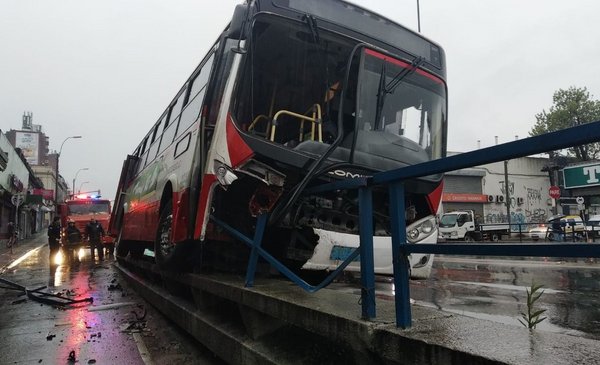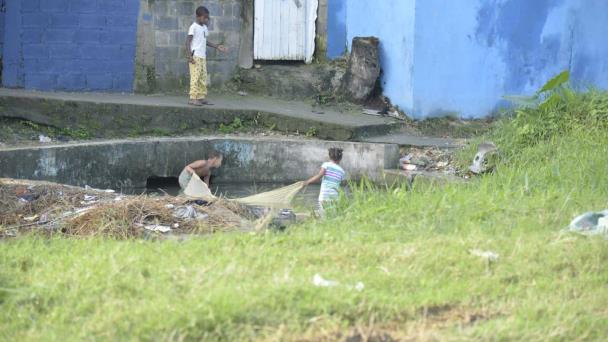There were four minutes left until the sun rose above the horizon line. The twilight light was still dim and at the intersection of the Carlos López and Francisco Bonilla roads the ditches were barely visible. A 19-year-old boy who was riding his motorcycle collided with another vehicle and died instantly. It was six in the morning on February 2. Was one of the 16 traffic accidents that occurred last year on that corner… one of the most dangerous in the capital.
Nine blocks from there, right where the train tracks hit the curve and the José Belloni avenue crosses López road, 22 traffic accidents occurred in all of 2022. Almost two per month. None of them was fatal (there were three serious ones, with no fatalities, and another 19 minor ones). But the figures make this part of the city the most rugged during the year that just ended.
According to statistics from the National Road Safety Unit (Unasev), only 16 corners concentrate 4% of the 6,412 accidents registered in Montevideo during the past year. And while most of the accidents were minor (86%, the same as in the city as a whole), at those 16 intersections there were 25 serious events and three fatalities.
Because to the death of the motorcycle driver in López y Bonilla, two other motorcyclists died in Larravide and José Pedro Varela avenue (the fourth most bumpy corner) are added. One was 39 years old and crashed on May 19, about twenty minutes after five in the afternoon. The other, 25 years old, had an accident ten minutes after ten at night on October 24.
More than half of those killed in traffic accidents in Montevideo last year were on a motorcycle (51 of 97 deaths). After this type of vehicle, pedestrians represent slightly more than a quarter of deaths due to road accidents (26). They are followed by crew members of cars (13), bicycles (5) and trucks (2).
Official statistics count as deceased those who died at the scene of the traffic accident or, having been involved, in the 30 days after the accident. After that window period, the cause of death is no longer computed associated with the incident.
More than half of those killed in accidents were under 45 years of age. Y more than half died by the time the sun is hidden.
What time are there more accidents?
The equation is simple: when there are more vehicles in circulation at the same time, there are more chances of accidents. That is why crashes on the roads are more frequent during the first half of January, and that is why Traffic accidents are more frequent at the time people leave work.
Four out of ten accidents occur during the afternoon. And, within them, almost the majority is concentrated between 4:30 p.m. and 6:30 p.m., the time when office shifts end.
This schedule —unlike the time of entry to work— coincides with other variables that increase the risk of accidents. Little by little, visibility decreases (late at night, especially in winter), the fatigue of drivers increases after the whole working day, and there is a greater rush to arrive at the destination as soon as possible (risk driving).
That same anxiety to get to work on time —and the greater volume of traffic— explains why the second daily peak of accidents occurs around eight in the morning (outside afternoon hours). And that same logic explains why the claims have been more frequent on Fridays (the last business day), but they decline during the weekends.
Historical statistics from Unasev show that in November and December there is an increase in the average number of daily accidents. It is a common characteristic of deaths from violent causes beyond accidents (suicides also grow towards the end of the year and sometimes the same thing happens with homicides). “Closure of cycles”, psychologists tell him.
But the covid-19 health emergency, which forced the drop in mobility intermittently in recent years, meant that the historic march was not strictly followed. In fact, if preliminary data on claims in Montevideo for 2022 versus 2021 are compared, it can be said that there was an 8% drop in accidents (and that in 2022 the emergency ended).
However, when the fatalities in the accidents that occurred are analyzed, Unasev’s preliminary figures show an increase: six more deaths and, therefore, an increase of 0.4 more deaths per 100,000 inhabitants.
If the pandemic years are removed, it seems that the death rate observed in the capital in the last year follows the historical downward trend. In this regard, Unasev had said in its latest report: “The fact that road accidents have maintained a decreasing rate in recent years should not lead to the conclusion that the issue has been resolved. First, because we are still a long way from achieving numbers in line with the countries with the best results; second, because when a public policy begins to show effectiveness it is not withdrawn or stagnant, quite the contrary, it is reaffirmed and intensified”.







